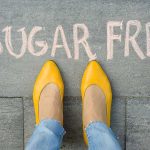Cannabis and the Endocannabinoid System
Cannabis and the Endocannabinoid System
Cannabis has had a renaissance in our culture over the pasta few decades. It’s clear that cannabis has an effect on the body, but how is it possible that this natural plant can have such a wide-reaching effect on a myriad of conditions?
The answer to this question lies in the endocannabinoid system (ECS) of the body. This system is a central piece of the puzzle that unlocks human health. Understanding what this system is, what it does, and how it interacts with cannabis is crucial for gaining a strong comprehension of how this plant can both alleviate and prevent symptoms.
What is the endocannabinoid system?
The endocannabinoid system of the body is its most integral system for maintaining health through homeostasis. Endocannabinoid receptors are found throughout the body, including in the brain, immune cells, connective tissues, glands, and organs.
Cannabinoid receptors are located throughout the entire central nervous system. The human endocannabinoid system was a major discovery in the late 80’s and lead to an explosion of research into cannabinoid receptors and how they work in the body. Scientists are still trying to figure out exactly how the endocannabinoid system works, but they do think it plays an important role in regulating functions.
Many people are surprised to learn the endocannabinoid system in their bodies is always at work, even if they never consume cannabis. Endogenous cannabinoids in the body help this system maintain homeostasis.
Understanding how the endocannabinoid system works is important for those who are considering using cannabis in any form. It’s important for cannabis users to understand how the endocannabinoid system works and how cannabinoids affect it.
How does the ECS work?
Before you can understand how the human endocannabinoid system works, it is important to know the three components that make up the system. They are as follows.
- Endocannabinoids
- Receptors
- Enzymes
Endocannabinoids
Endocannabinoids are similar to cannabinoids, but they are made by the human body. They are produced by the body as needed. Two endocannabinoids have been discovered so far.
- Anandamide (AEA)
- 2-Arachidonoylglyerol (2-AG)
Cannabinoid Receptors
The human body is full of cannabinoid receptors. Endocannabinoids bind with the receptors, initiating action by the ECS. There are two main types of endocannabinoid receptors, which are CB1 receptor and CB2 receptors. The CB1 receptor and CB2 receptor are responsible for all cannabinoid interactions in the body, and are the basis for the entire endogenous cannabinoid system. Both the CB1 and CB2 regulate different parts of the system, depending on the cannabinoid receptor type.
Endocannabinoids can bind with either type of receptor, and the one they bind with will determine the effect. The effect is also determined by the area of the body where the binding of the receptor takes place.
Enzymes and the Central Nervous System
Enzymes are an integral part of the endocannabinoid system. Once the endocannabinoids have carried out their function, enzymes break them down, so they can be disposed of by the body.
Two main enzymes are a part of the ECS. Hydrolase is a fatty acid that breaks down AEA, and lipase, which is a monoacylglycerol acid, breaks down 2-AG. The ECS is a complicated system, and scientists have yet to discover all its functions and exactly how it works in the human body.
Cannabis and endocannabinoid receptors
Two main cannabinoids bind with the cannabinoid receptors in the body. The first is THC. Most have heard about THC (Tetrahydrocannabinol) because it is the cannabinoid on the cannabis plant that makes you high.
THC is the most powerful cannabinoid in cannabis because it can bind with both CB1 and CB2 receptors. Because it is so powerful and can bind with both types of receptors, THC can create multiple effects.
CBD (Cannabidiol) is the other cannabinoid found in cannabis. CBD does not make a person high. Although scientists are still researching to find out how CBD interacts with the endocannabinoid system of the body, they do know it does not bind to the receptors in the same way as THC.
Instead, it is thought to work on preventing the body from breaking down endocannabinoids. There is also some evidence to suggest CBD may even bind to a different receptor that has not yet been discovered.
Now that you have a better understanding of how the endocannabinoid system in the body works, it is important to learn what cannabis does and how it has helped some people with medical conditions.
Conclusion
As research continues on the ECS, it will be interesting to see how medical cannabis treatments continue to evolve and become a stronger part of traditional medicinal practices.
It is clear that the ECS is integral in the body. Without it, homeostasis seems less likely to be maintained. Because the body is full of endocannabinoid receptors, it seems cannabis is a natural fit for helping.
With further research, it is hoped medical scientists will have a clearer understanding of how cannabis can be used as a stand-alone or complementary treatment in mainstream medicine. Cannabis may help with a variety of conditions in the body and is showing greater promise with each new study. Time will tell how cannabis will continue to intertwine itself into our health and wellness world.
Disclaimer – Information is provided for educational purposes. It does not, and is not intended to, constitute legal advice or reliable statements of the status of any laws. We attempt to be accurate and up to date but the legality of cannabinoids is evolving. The author is not a lawyer or a legal expert. You should check with your local authorities before buying or using any products.
References
Introduction To The Endocannabinoid System
Frequently Asked Questions
What is the difference between CBD and THC?
CBD and THC are both naturally-occurring cannabinoids from the cannabis plant. They have the exact same molecular structure, and a slight difference in how some of the the atoms are arranged makes the difference. THC is the main psychoactive component of the plant that can make people feel high. CBD is not psychoactive and it’s used for its own benefits.
How does CBD make you feel?
High CBD, low THC cannabis can produce a range of effects from clear-headed alertness & energy to calm & relaxation.
The strength of the effects on a particular person will be different depending on a few things: the dosage level, body weight, food or other substances in the system, personal body chemistry, and experience level with cannabis products.
Will CBD products show up in a drug test?
There is a risk of failing a drug test. It depends on the type of CBD product one is using.
Drug tests for marijuana generally identify THC or its metabolites. Although tests do not screen for CBD, full spectrum CBD products contain low quantities of THC that can make a person fail a drug test. If you anticipate taking a drug test, we suggest checking with your employer or test administrator for clarity prior to taking full spectrum CBD products.





